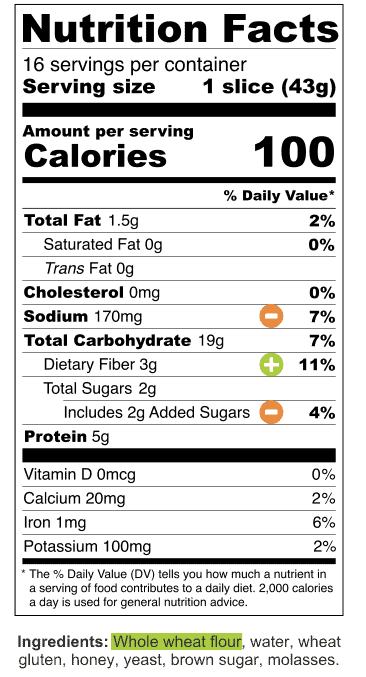
Our nutrition guidance program is credible because it’s built on evidence-based nutrition science.
Our Scientific Advisory Panel (SAP), an independent team of scientists and nutrition experts from leading institutions, monitors the current Dietary Guidelines for Americans, as well as the recommendations of leading national and international health organizations such as the U.S. Food and Drug Administration, U.S. Department of Agriculture, the National Academy of Sciences, and the World Health Organization. The SAP adjusts our algorithms as scientific consensus agrees on new reasons to promote, limit, or avoid certain nutrients or ingredients.
Our algorithms rigorously evaluate foods.
Specific nutrients and ingredients contribute to foods earning or losing points. Nutrients that are best to limit in our diets cause a food to lose points. Nutrients we should generally be eating more of cause a food to earn points. All foods are evaluated and earn a rating, but only those with a positive rating, containing more of the qualities we want to encourage, earn 1, 2, or 3 Guiding Stars.
- More
- Vitamins
- Minerals
- Fiber
- Whole Grains
- Omega-3s
- Less
- Saturated Fat
- Trans Fat
- Added Sodium
- Added Sugars
- Additives to Limit
Our patented algorithms look at the balance of these points in a 100-calorie serving of the food. This allows us to rate foods against an objective standard. This standardization also allows the consumer to compare products side by side and adjusts for serving size variation of the same product due to food packaging, as well as water weight.
 Guiding Stars recognizes no single algorithm can meet all needs.
Guiding Stars recognizes no single algorithm can meet all needs.
In situations where the recommendations for a food or diet vary, so do our algorithms. Foods for babies and toddlers, for example, are rated with a separate algorithm, recognizing that the dietary recommendations are different for children under the age of two. Fats and oils also have a separate algorithm, as do meats and seafood, because foods in these categories contain a different balance of nutrients and need to be assessed accordingly. Finally, beverages have a unique algorithm to evaluate beverages based on a 12-ounce serving size since so many products in the category contain few or no calories.
Our science stays current.
Our patented algorithms are frequently reviewed by our Scientific Advisory Panel (SAP). When the scientific consensus around a specific nutrient or food group changes, the SAP revises our algorithms or develops new ones to make sure the Guiding Stars are always pointing to the most current understanding of good nutrition.
Want to learn more?
Follow our blog, sign up for our newsletter, or look for Guiding Stars in a brand near you.